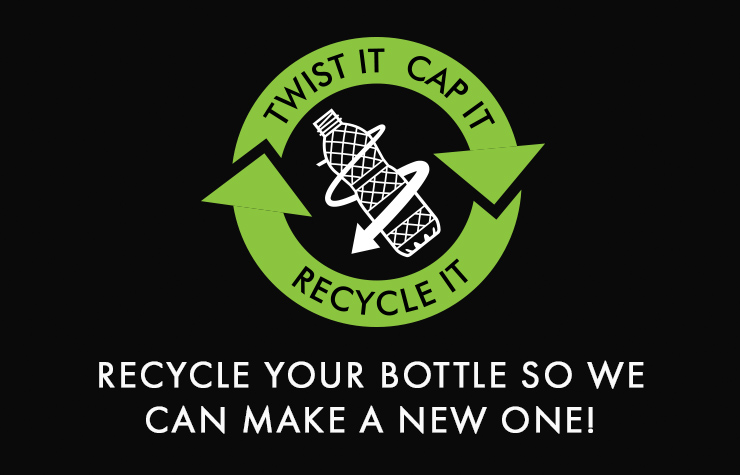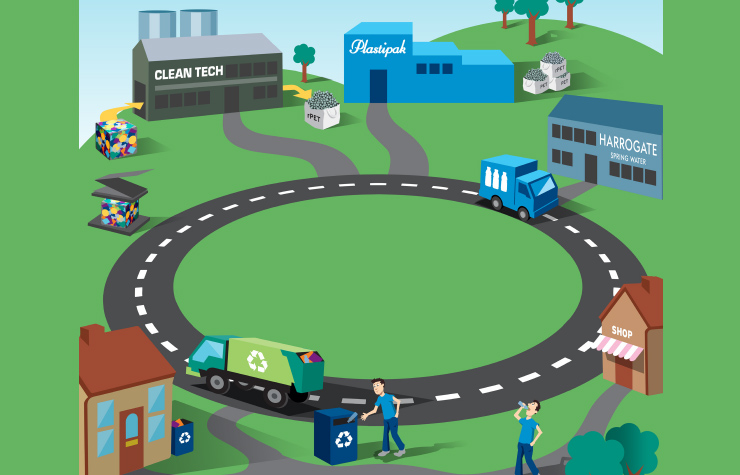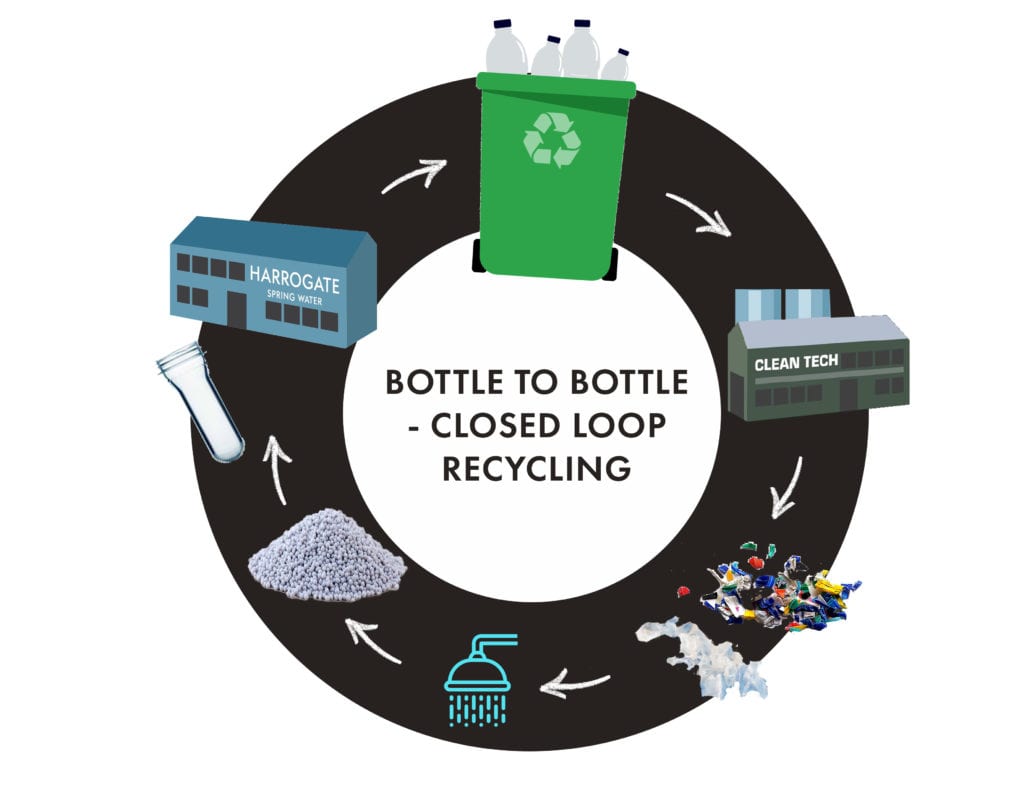

We’re campaigning to promote a circular economy for PET Plastic here in the UK. A circular economy for plastic will help to divert recyclables away from landfill and improve recycling rates so we can create more bottles from recycled PET plastic!
A circular economy, or a ‘closed loop’ is the model by which a material is collected, recycled and made into something new. This approach keeps products and materials in use for longer, reusing them so we get more value out of them. Creating a circular economy is vital for the preservation of natural resources. We can all reduce plastic waste by developing a circular economy, rather than continuing our unsustainable ‘make, use, dispose’ way of doing things.
For Harrogate Spring, this means recycling PET bottles to create new ones made from recycled PET. This closed loop bottle-to-bottle recycling ensures that PET bottles will live another life and never end up in landfill, or our natural environment.

Since June 2018, Harrogate Spring bottles have been made using more than 50% recycled content. Recycling PET bottles is the key to achieving a circular economy. Banning plastic or branding it as ‘waste’ is not driving positive change or improving recycling rates.
Did you know that 48% of consumers believe ‘single-use’ refers to non-recyclable packaging? This confusion has been exacerbated by media reports that fail to recognise recyclable plastics as recyclable. Recycling is the here-and-now solution to avoiding waste and moving towards a sustainable circular economy.
1. Recycle your bottle! The journey of a Harrogate Spring bottle starts with you! The first step is to make sure your PET bottle goes in your recycling bin with the cap on.
2. Collection & Sorting – Your bottle will be collected by your local council; the bottles will be taken to a sorting centre where they’ll be baled and sent to a PET reprocessing plant such as Cleantech.
3. Ballistic Separator – When the bales arrive, they are put through a ‘Ballistic Separator’ which sorts the PET from non-plastics, including aluminium and paper.
4. Granulation & Polymer Separation – The PET bottles and caps are shredded into flakes and sorted by polymer type. The flakes are washed before passing through a ‘float chamber’ – PET flakes will sink whereas HDPE (cap) and PP (label) flakes will float!
5. Flake Hot Washing – The flakes are then washed and dried at a high temperature to ensure they are food-grade quality. They are then sorted by size and colour – The clear and blue tinted flakes are melted down to form circular pellets.
6. Purification & Strengthening – The pellets are then heated to a high temperature in a vacuum for 8 hours. This removes any impurities and rebuilds the molecular chains so that the rPET is as strong as virgin PET.
7. Pellets to preform – The food-grade rPET pellets are melted down and injected into a preform that is then sent back to the Harrogate Spring facility.
8. Back to Harrogate Spring – The preforms are heated and blown into Harrogate Spring bottles ready to be distributed!

By working with plastic recycling plants like Cleantech, Harrogate Spring are helping to stem plastic waste exports and create a market for recycled plastics in the UK! Achieving a circular economy will require a shift in mind set and can only be achieved when everyone does their bit and that means recycling! Every bottle deserves a second chance!
Read more about our sustainability efforts here!